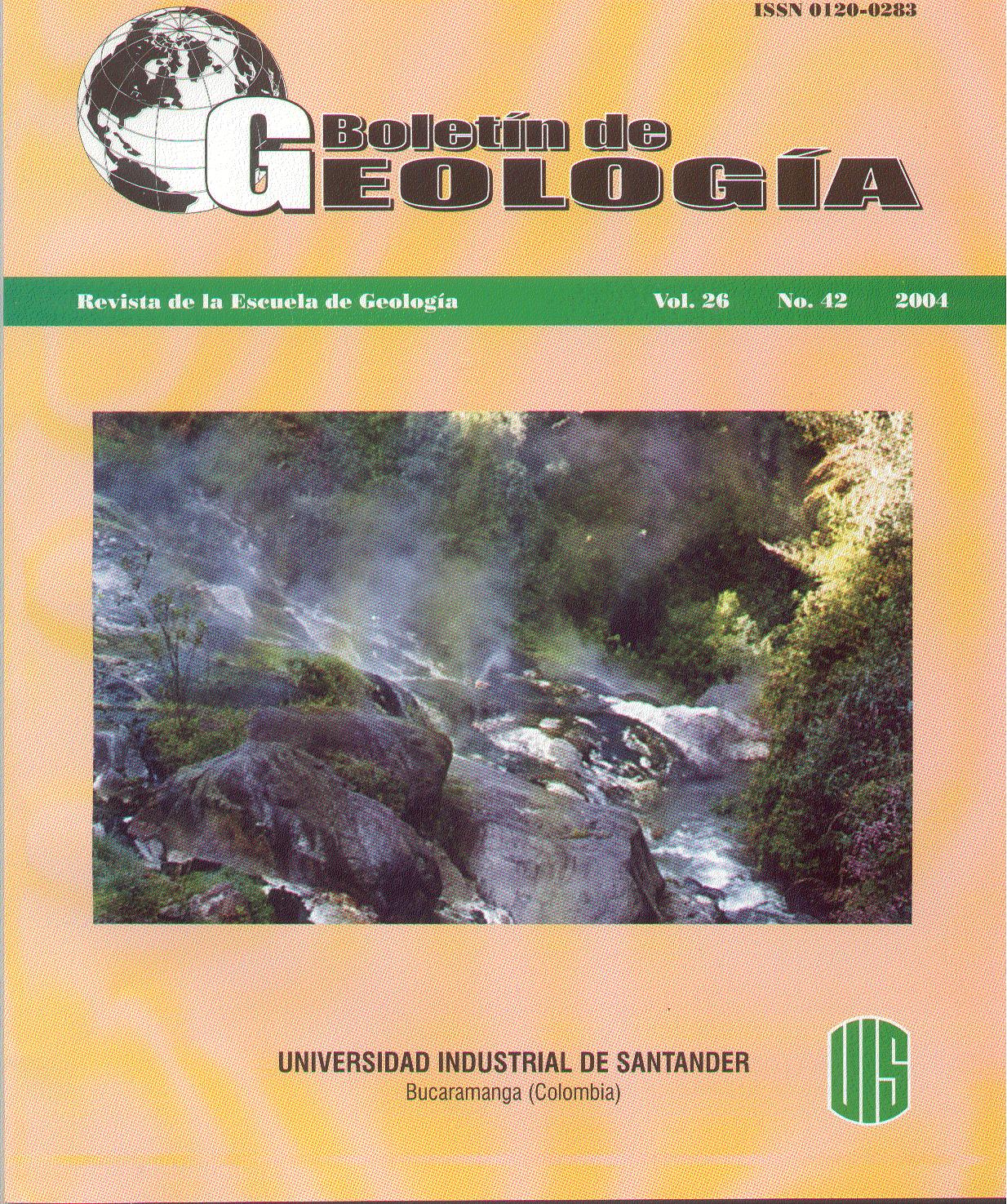Chemically sector-zoned garnets in the metapelitic rocks of the Silgará Formation in the central Santander Massif, colombian andes: occurrence and growth history
Publicado 2004-03-25
Palabras clave
- Formación Silgará,
- Macizo de Santander,
- granate químicamente sector-zonado,
- metamorfismo
Cómo citar
Resumen
El granate tipo almandino en las rocas metapelíticas de la Formación Silgará en la región central del Macizo de Santander usualmente muestra zonación química concéntrica normal. Sin embargo, se han reportado diferentes tipos de zonación en el granate, incluyendo el granate químicamente sector-zonado, el cual es descrito aquí. Estudios recientes revelan descubrimientos adicionales de este tipo de zonación en diferentes localidades. Los granates que exhiben zonación sectorial textural han sido observados en la zona metamórfica de la estaurolitacianita de la Formación Silgará. Estos son generalmente de grano fino (0.25-2.00 mm de diámetro), y ocurren en bandas ricas en cuarzo junto con otros tipos texturales de granate (esqueletal y poiquiloblástico). El estudio del granate químicamente sector-zonado indica que este creció en la etapa tardía de metamorfismo de la Formación Silgará, durante el emplazamiento de masas de ortoneis. Estudios sobre el granate en las rocas pelíticas de la Formación Silgará han mostrado su importancia como pieza clave en la interpretación de la historia tectonometamórfica de esta unidad metamórfica.
Descargas
Referencias
.
Barker, A. (1990). Introduction to metamorphic texturesand microstructures. Chapman & Hall, New York, 170p.Bence, A., and Albee, A. (1968). Empirical correctionfactors for the electron microanalysis of silicates andoxides. Journal of Geology, Vol. 76, pp. 382-403
Boinet, T., Bourgois, J., Bellon, H., and Toussaint, J.(1985). Age et repartition du magmatism premesozoiquedes Andes de Colombie. Comptes rendus hebdomadairesdes séaces de L’Académie des Sciences. Serie D: SciencesNaturalles, Vol. 300(II), pp. 445-450
Burton, K. (1986). Garnet-quartz intergrowths ingraphitic pelites: the role of the fluid phase. MineralogicalMagazine, Vol. 50, pp. 611-620
Castellanos, O. (2001). Chemical composition of therock-forming minerals in the Silgará formation and P-Tconditions in the Mutiscua area, Santander Massif,Eastern Cordillera, Colombia. Master Thesis, ShimaneUniversity, Matsue (Japan), 146p.
Ferguson, A., Harley, P., and Lloyd, G. (1980). On themechanical interaction between a growingporphyroblasts and its surrounding matrix. Contributionsto Mineralogy and Petrology, Vol. 75, pp. 339-352
Finlay, A., and Kerr, A. (1979). Garnet growth in ametapelite from the Moinian rocks of NorthernSutherland. Contributions to Mineralogy and Petrology,Vol. 71, pp. 185-191
Goldsmith, R., Marvin, R. & Mehnert, H. (1971).Radiometric ages in the Santander Massif, EasternCordillera, Colombian Andes. U.S. Geological SurveyProfessional Paper, Vol. 750-D, pp. D41-D49
Hollister, L. (1970). Origin, mechanism, andconsequences of compositional sector-zoning instaurolite. American Mineralogist, Vol. 55, pp. 742-766
Kouchi, A., Sugawara, Y, Kashima, K., Sunagawa, I.(1983). Laboratory growth of sector-zonedclinopyroxenes in the system CaMgSi2O6-CaTiAl2O6.Contributions to Mineralogy and Petrology, Vol. 83, pp.177-184
MacQueen, J., and Powell, D. (1977). Relationshipsbetween deformation and garnet growth in Moine(Precambrian) rocks of western Scotland. GeologicalSociety American Bulletin, Vol. 88, pp. 235-240
Olimpio, J, and Anderson, D. (1978). The relationshipbetween chemical and textural (optical) zoning inmetamorphic garnets, South Morar, Scotland. AmericanMineralogist, Vol. 63, pp. 677-689
Powell, D. (1966). On the preferred crystallographicorientation of garnet in some metamorphic rocks.Mineralogical Magazine, Vol. 35, pp. 1094-1109
Rice, A., and Mitchell, J. (1991). Porphyroblast texturalsector-zoning and matrix displacement. MineralogicalMagazine, Vol. 55, pp. 379-396
Spear, F. (1993). Metamorphic Phase Equilibria andPressure-Temperature-Time Paths. Mineralogical Societyof America MONOGRAPH SERIES, Washington, DC,799p.
Takasu, A., and Kondo, Y. (1993). Color map photos ofthe Sambagawa garnets. Earth Science, Vol. 47, pp. 1-3
Kitamura, M., Wallis, S., and Hirajima, T. (1993). Sectorzoning and surface roughening of garnet in theSambagawa metamorphic rock. Proceedings 6th Topic.Meet. Crystal Growth Mechanism, pp. 215-220
Shirahata, K., and Hirajima, T. (1995). Chemically sector-zoned garnet in Sambagawa schists, its mode ofoccurrence and growth timing. J. Japan. Assoc. Min.Petr. Econ. Geol., Vol. 90, pp. 69-79
Ward, D., Goldsmith, R., Cruz, B., Jaramillo, C., yRestrepo, H. (1973). Geología de los Cuadrángulos H-12, Bucaramanga y H-13, Pamplona, Departamento deSantander. U.S. Geological Survey e Ingeominas. BoletínGeológico, Vol. XXI (1-3), 132p
Yardley, B. (1989). An introduction to metamorphicpetrology, Longman, Harlow, England, 248p
